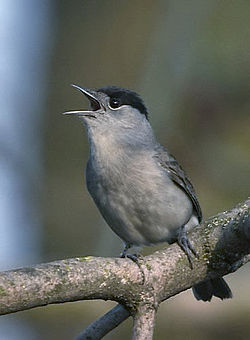| Sylviidae | |
|---|---|
 | |
| Eurasian blackcap (Sylvia atricapilla) | |
| Scientific classification | |
| Kingdom: | Animalia |
| Phylum: | Chordata |
| Class: | Aves |
| Order: | Passeriformes |
| Superfamily: | Sylvioidea |
| Family: | Sylviidae Leach, 1820 |
| Genera | |
See text | |
Sylviidae is a family of passerine birds that includes the typical warblers Sylvia, and the closely related genus Curruca , formerly included in Sylvia. They are found in Eurasia and Africa, with the greatest diversity in the Mediterranean region.

